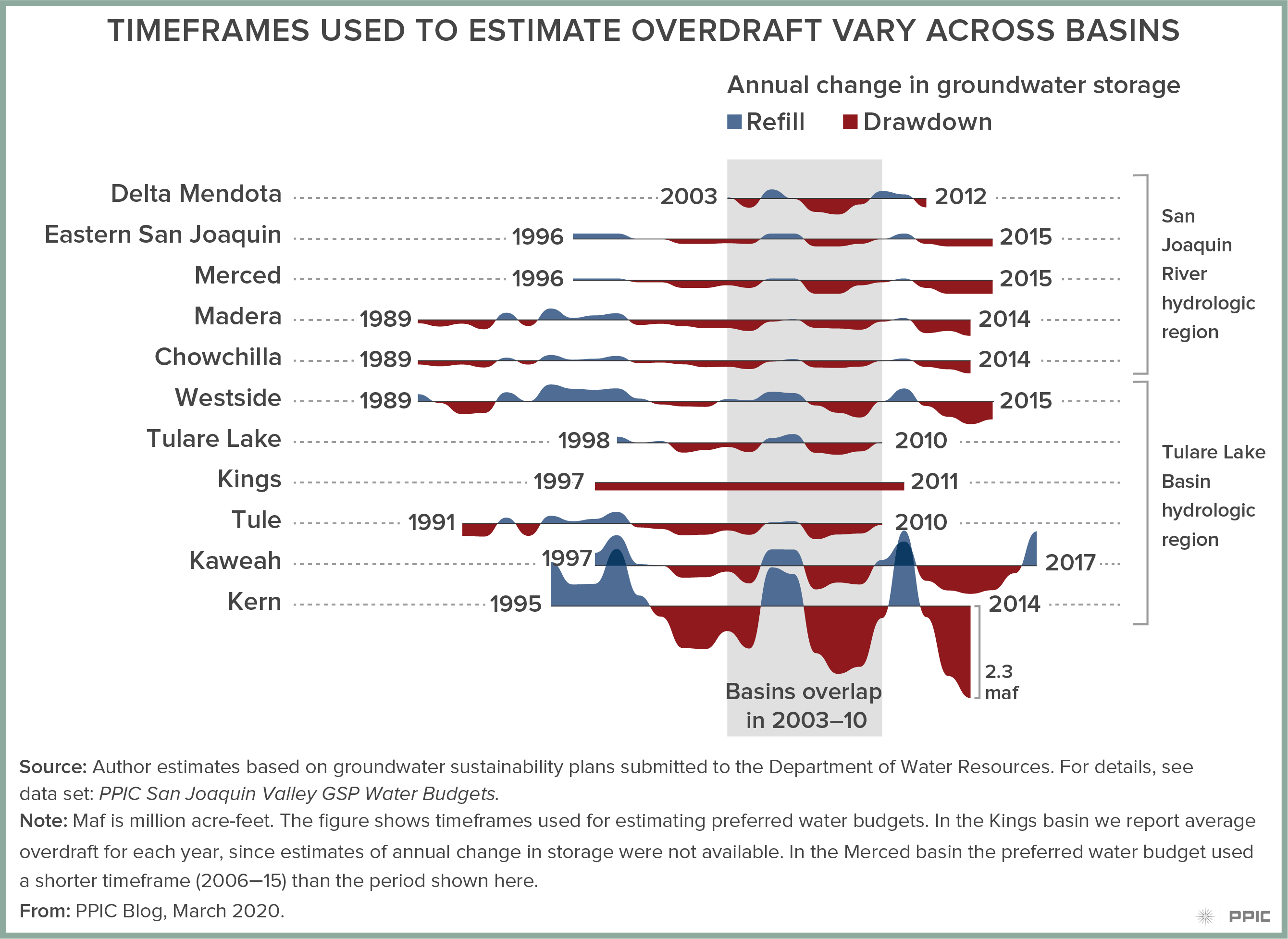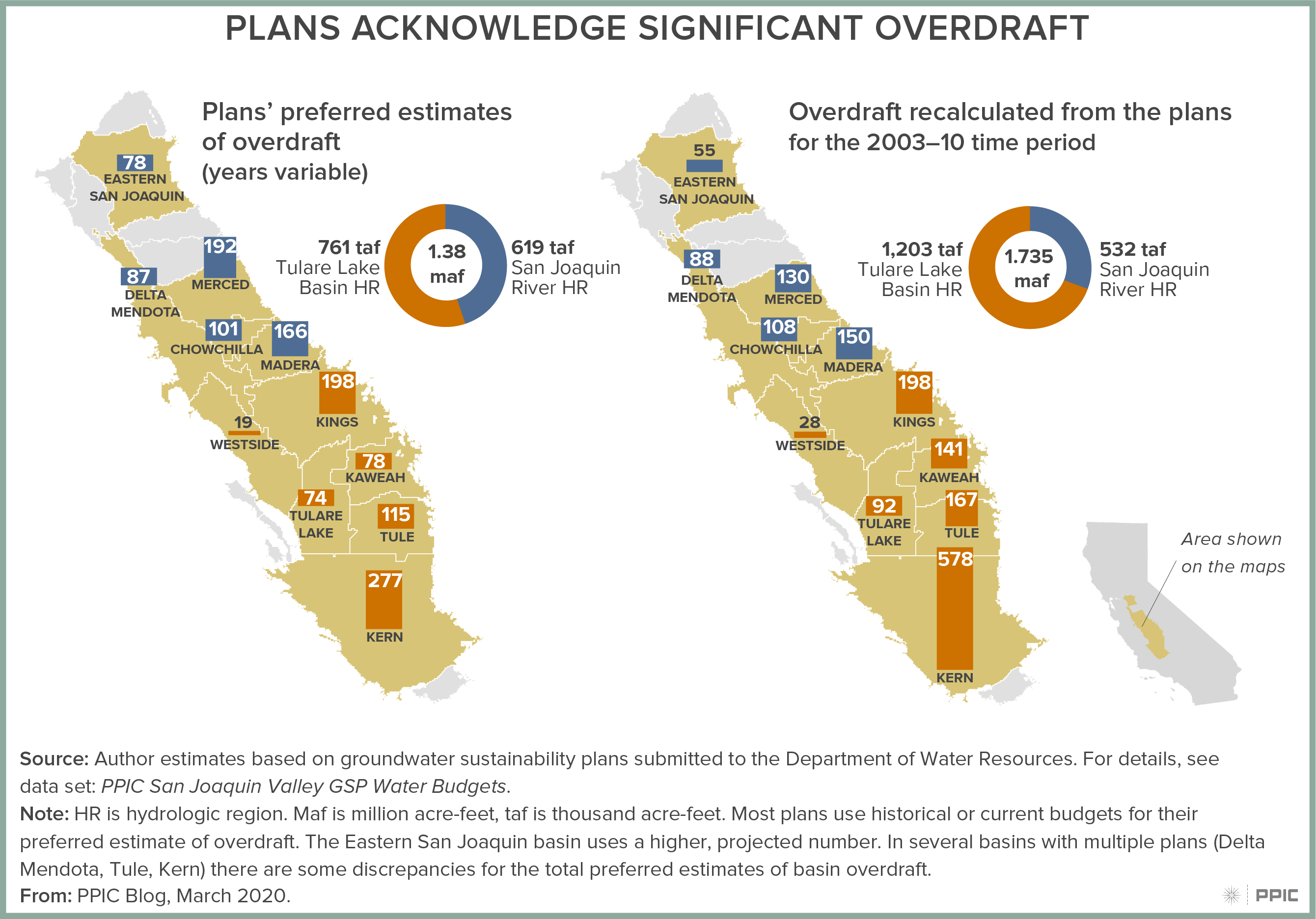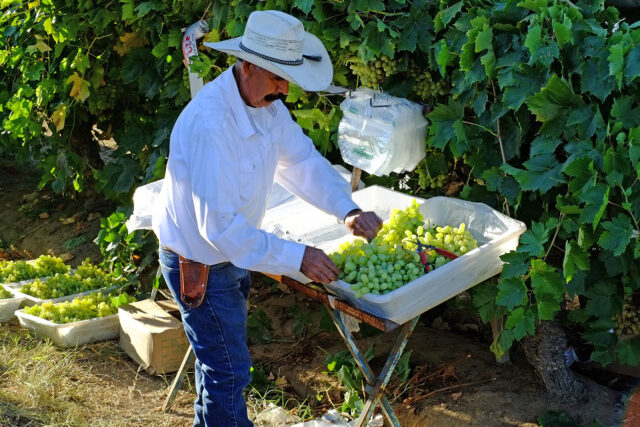This year marks a new phase in California’s landmark Sustainable Groundwater Management Act (SGMA). At the end of January, water users in 21 critically overdrafted basins delivered their first groundwater sustainability plans to the state Department of Water Resources. In this series, we examine the 36 plans submitted for 11 critically overdrafted basins in the San Joaquin Valley—California’s largest farming region. PPIC has done extensive work on what SGMA means for this region, where excess pumping is a major challenge. This post addresses key questions about groundwater budgets.
What are water budgets, and why do they matter?
Water budgets track the water coming into and going out of the groundwater basin. If more groundwater is pumped than the amount replenished over time, the basin is in overdraft. In our study of the valley’s 30-year water balance (1988‒2017), which used data on inflow and outflow to the San Joaquin Valley as a whole, we found a long-term overdraft of 1.8 million acre-feet per year—about 11% of net water use.
Under SGMA, water users need to bring their basins into long-term balance and avoid undesirable effects from excess groundwater pumping—such as lowering groundwater levels and causing lands to sink. Understanding the extent of the overdraft problem is key to taking appropriate action. As the saying goes, you can’t manage what you don’t measure.
What type of groundwater budgeting does SGMA require?
The regulations require groundwater sustainability plans (GSPs) to include three types of water budgets—historical, current, and projected—but allow a lot of flexibility on the specifics. Historical budgets only need to include 10 continuous years of data, including the most recent years available for that basin. Current budgets need to show present-day conditions, and projected budgets need to look ahead 50 years and consider anticipated changes in population, climate, and other factors that could affect water supplies and demands. The plans can then choose which budget to emphasize for addressing overdraft.
In many basins, water users have opted to develop separate GSPs for different areas. In those basins, the GSPs must use a common timeframe and a common overall budget. But there’s no requirement for consistency across neighboring basins. The regulations also leave it up to locals to choose their methods for elements that must be estimated, such as how quickly groundwater moves from one basin to another. Budgets can look better or worse depending on assumptions about such factors.
The span of years covered by budgets can also matter a lot, given California’s variable climate. Budgets with more wet years will look better than budgets with more dry years. The figure below shows the budget timeframes that the valley’s plans use for their preferred estimates of overdraft. These timeframes vary widely. Basins in the wetter northern part of the valley (the San Joaquin River hydrologic region) are more likely to include the recent drought than are the basins in the drier, more groundwater-dependent southern valley (the Tulare Lake Basin hydrologic region).

Do the plans acknowledge the valley’s overdraft problem?
In general, yes. As the figure below shows, the plans report a considerable amount of overdraft—around 1.4 million acre-feet (maf) per year. But since they cover different timeframes, it’s misleading to simply add up the totals reported. To compare apples to apples, we looked at the eight years that are included in all of the budgets: 2003‒10. This short period is instructive, because it includes both wet and dry years. The plans estimate around 1.7 maf of annual overdraft in these years—fairly close to our valley-wide estimate of 1.9 maf for the same period. So overall, the plans are telling a story that is broadly consistent with the overall regional water balance. This apples-to-apples comparison also reduces the wet-year bias in many of the Tulare Lake Basin budgets.

Even so, some basins are probably underestimating overdraft. And if the future is drier than the past, the overall challenge for the valley could be greater. We found, for instance, that the region-wide overdraft for 2003‒17—a period that included a record-breaking five-year drought—was 2.4 maf/year—a good deal higher than the 30-year average of 1.8 maf.
What’s next?
Acknowledging overdraft is important, but it’s just the first step. The options to end overdraft include augmenting water supplies, reducing water demand, or some combination of the two. Next week’s post will examine what the plans propose to do.
Note: The underlying data and additional notes on the water budgets used in these plans can be found in Data Set: PPIC San Joaquin Valley GSP Water Budgets.







